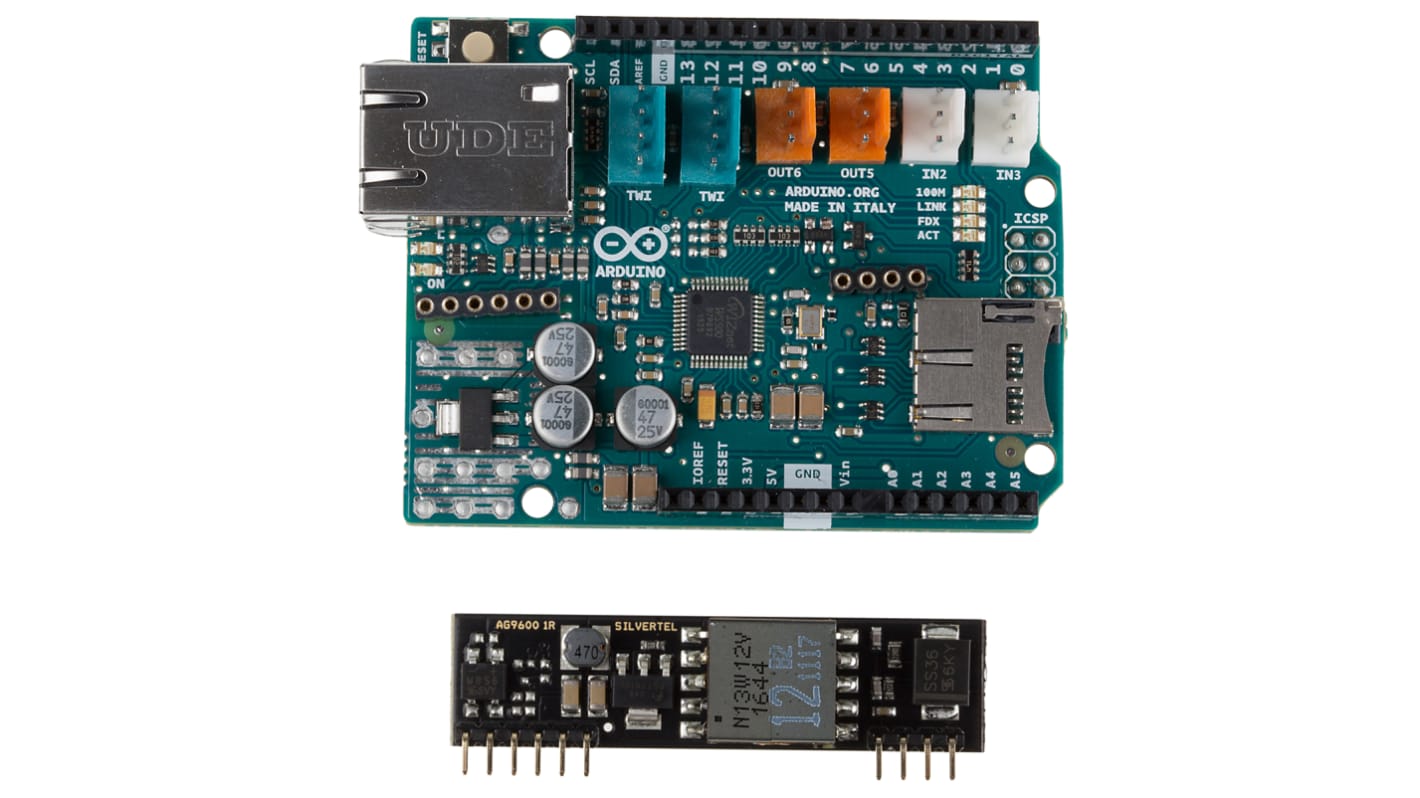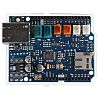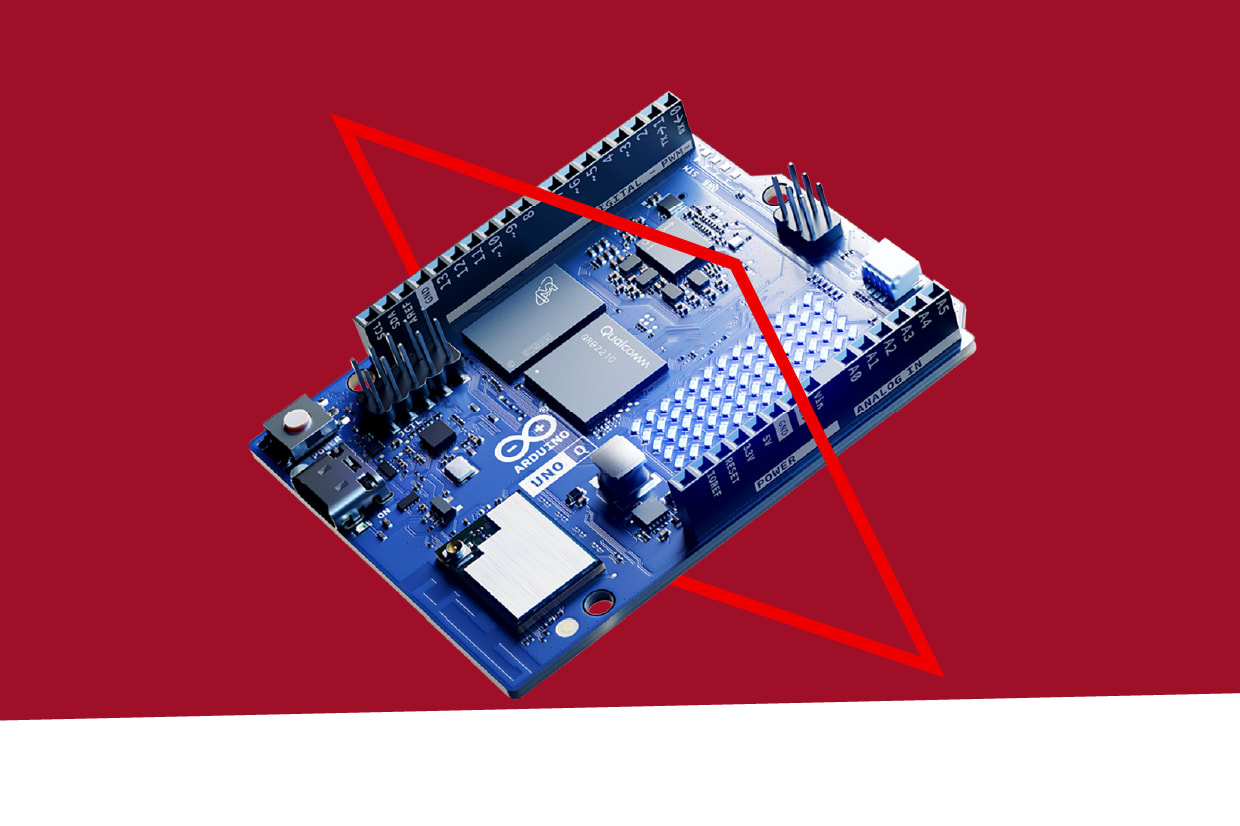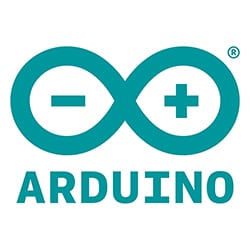Arduino -, PoE Shield A000025
- RS Stock No.:
- 873-2294
- Mfr. Part No.:
- A000025
- Brand:
- Arduino

Unavailable
RS will no longer stock this product.
Alternative
This product is not currently available. Here is our alternative recommendation.
Each
£22.94
(exc. VAT)
£27.53
(inc. VAT)
- RS Stock No.:
- 873-2294
- Mfr. Part No.:
- A000025
- Brand:
- Arduino
Specifications
Technical Reference
Legislation and Compliance
Product Details
Find similar products by selecting one or more attributes.
Select all | Attribute | Value |
|---|---|---|
| Brand | Arduino | |
| Classification | Shield | |
| Select all | ||
|---|---|---|
Brand Arduino | ||
Classification Shield | ||
Arduino Ethernet Shield 2 with/without PoE
The Arduino Ethernet Shield 2 comes in 2 versions: one with PoE (8732294) and one without PoE (8732285). The shields have been designed to integrate rapid internet connection into designs that use Arduino boards. Other shields can be stacked right on top of the ethernet shield, allowing for optimum functionality integration in designs. Both shields feature the Wiznet W5500 ethernet chip that provide an IP stack that supports TCP and UDP protocols. The W5500 also supports up to 8 socket connections at once.
How is version 2 different to previous versions?
Version 2 features an on-board microSD card slot as a pose to a standard size SD card.The upgraded version 2 also has a higher Arduino board compatibility — the previous version does not support the Mega board.
What do I need to use this version 2 shield?
All you need is an Arduino board, a 5 V operating voltage (this will come from the Arduino board), an ethernet controller, 10/100 Mb connection speed and and connection with an Arduino via an SPI port.
Features & Benefits of the Ethernet Shield 2
•W5500 ethernet chip
•Dimensions: 2.7 x 2.1 ins
•MicroSD card slot/card reader
•Re-set controller
•RJ45 ethernet jack
•5 status LEDs
You can download the new Arduino IDE at arduino.org/downloads
How is version 2 different to previous versions?
Version 2 features an on-board microSD card slot as a pose to a standard size SD card.The upgraded version 2 also has a higher Arduino board compatibility — the previous version does not support the Mega board.
What do I need to use this version 2 shield?
All you need is an Arduino board, a 5 V operating voltage (this will come from the Arduino board), an ethernet controller, 10/100 Mb connection speed and and connection with an Arduino via an SPI port.
Features & Benefits of the Ethernet Shield 2
•W5500 ethernet chip
•Dimensions: 2.7 x 2.1 ins
•MicroSD card slot/card reader
•Re-set controller
•RJ45 ethernet jack
•5 status LEDs
You can download the new Arduino IDE at arduino.org/downloads
Arduino Shields & Add-On Boards
Our range of shields and add-on boards can add the extra functionality you need by attaching on top of or plugging into an Arduino board. Functionality ranges from adding motion sensing, power management, motors and displays to connecting your devices via Ethernet, GSM, WiFi and USB. There are also options for more flexible prototyping.
Related links
- Arduino Development Board A000103
- Arduino MKR WAN 1310 LoRaWAN Communication Board ABX00029
- ZDAUTO Evaluation Board Arduino Arduino Shield Board MIO-UNO-KIT
- ZDAUTO Evaluation Board Arduino Arduino Shield Board MIO-UNO
- MikroElektronika Arduino Nano Click Shield Shield MIKROE-4443
- Infineon PSOC™ 4 Analog Front End ( AFE ) Shield Kit PSOC™ Arduino Uno WiFi CY8CKIT-032
- Renesas Electronics Arduino Mega Arduino Board Evaluation Board RTK7RLG230CSN000BJ
- Infineon TLE92464EDEVALBOARDTOBO1 Arduino UNO Evaluation Board TLE92464EDEVALBOARDTOBO1



